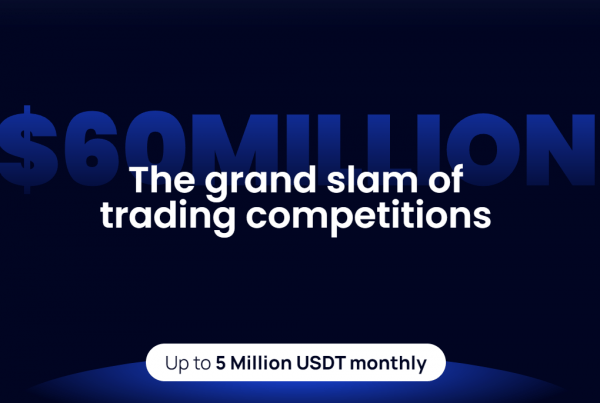
Michael, we have seen an explosion in the stablecoin sector lately, particularly this year, with the total market cap now standing at over $24 billion, per CoinGecko. Do you see this growth continuing?
The growth in the stablecoin sector is only going to accelerate, both in terms of the number of stablecoins and market capitalization. It is very likely that what we are observing with Tether will occur with many stablecoin projects, where they issue parts of their total treasuries as stable assets on multiple protocols. Stablecoins will be a primary driver of adoption for protocols, bringing utility to networks and generating demand for the protocol tokens that power these on-chain operations. That being said, in order to achieve mainstream adoption, much of the complexity associated with blockchain technology will need to be abstracted out for the consumer. Everyday users will interact with stablecoins, tokenized points and rewards etc., assets they already understand. The applications that attract users will have blockchain technology seamlessly built into the backend infrastructure, optimizing the user experience without the intrancies of blockchain tech: gas fees, token swaps, private keys etc.
Tether is currently the king in the realm of stablecoins, do you think this is likely to change?
$18 billion is a lot for crypto right now, and is a significant market capitalization, however, this is small when it comes to more traditional markets. Every brand and corporation could one day have a US dollar stablecoin, a Euro, a CAD, and a stablecoin for every country they operate in, in addition to a stablecoin for their loyalty system. A company like Walmart processes about $500 billion in transactions a year – the savings they would experience switching from payment rails such as Visa and Mastercard to using a branded stablecoin are at minimum $10 billion. I would go as far as to say that the current total market cap of Ethereum is irrelevant in the face of the value held within brands, and as brands continue to explore stablecoin solutions, we will see the total stablecoin market cap explode.
Some stablecoin proponents say they can help brands/companies generate interest on reserve assets, with the tokenized equivalent operating within the protocol. Will this lead to more issues of fractional reserves? Is there the possibility of a liquidity crisis or “bank run” with the lending of underlying assets?
Blockchain enables any individual or company to launch a bank or bank like service. The economics and governance of these protocols will become arbitrary, with users flocking to those that align best with their own preferences: risk tolerance, returns, flexibility etc. Some countries allow their banks to be less conservative than others, but soon availability won’t be an issue – you’ll have thousands of dapps at your disposal and the ones you choose to go with will be up to you. Some of these companies may choose to be highly leveraged whereas others will seek to minimize balance sheet risk, and you’ll see the returns and interest rates reflect this. You look at Canada for instance where we have 5 major banks. With blockchain this could be one hundred, even one thousand banks.
Do you think that this will be the dominant form that it takes, institutions and corporations will utilize those assets in the background where the processes for the everyday person don’t really change?
For the most part, yes. Solutions that fail to abstract out complications will struggle to gain adoption, and will ultimately be beat out by more streamlined, intuitive ones.
What are the biggest challenges for stablecoins now? Will they remain the same in the near future and what foreseeable threats are out there?
One of the biggest challenges for stablecoins right now is the lack of infrastructure, utility, and acceptance. Payment rails like Visa and Mastercard are fast, reliable, and well-known so it’ll take some time for people to begin shifting over, even if stablecoins allow you to process transactions faster and cheaper. Then you get into the acceptance bit… what’s the point of a faster, cheaper solution if no one else is using it? PayPal was a big move for mainstream acceptance, and I think that this will become less of an issue as big names continue to integrate digital assets. The last thing is utility, stablecoins get a lot of usage as trading coins right now and are allowing people to lock in profits and avoid the volatility of the crypto markets. This goes hand-in-hand with acceptance, the more people that use and accept stablecoins, the more utility they’ll have… and again, I see this only growing in the years to come.
Do you think stablecoins will allow people in developing countries to live better lives? Also, if a country in Africa is using a stablecoin like the USDC, is that a threat to their monetary sovereignty?
So this is one of the areas I think branded stablecoins can create huge value, because you can be rewarded with every action that you take. I don’t think that branded currencies will replace fiat currencies, at least in the short term, but it’ll have much higher value for you to use your brand-coin when interacting with that brand or with any brands in the ecosystem, then by using fiat, because it’ll provide additional value such as cashbacks that will be more competitive than payments made in fiat currency.
As far as monetary sovereignty goes, blockchain technology is breaking down borders. With an internet connection people now have the ability to choose the protocols and assets they wish to use, and restrictions from governments will only limit the flow of value into the country.
As stablecoins continue to grow in popularity, is there “room” for assets like Bitcoin and Ether?
As far as public blockchains go, I expect there to be potentially hundreds or thousands of blockchains and the validity of assets issued on-chain to result in value created for the network’s utility token. Protocols will build economics, governance, and other features to encourage developers, users and investors to contribute to their network, although I believe that in the future interoperability will be much simpler so that digital assets can more seamlessly live on multiple blockchains. What we will see though is the assets users explicitly interact with brought to the forefront, with the complexities such as utility tokens abstracted out of the user experience.
How do you see things developing for blockchain, in general?
In the future, we’re going to live in a world where if it has value, it will be on-chain. Society will become increasingly borderless and you won’t be limited by geography, you’ll have access to anything and everything on-chain, and you’ll be able to optimize based on your preferences. This will heighten competition and lead to better products for users.
Lastly, I’m pleased to announce that the XDB Foundation will be holding a Brand Blockchain Summit in Q1 of next year. We are looking to bring together participants of the DigitalBits ecosystem, as well as those outside of it looking to add value, both within blockchain and the more traditional loyalty sector. Stay tuned for details on this.



